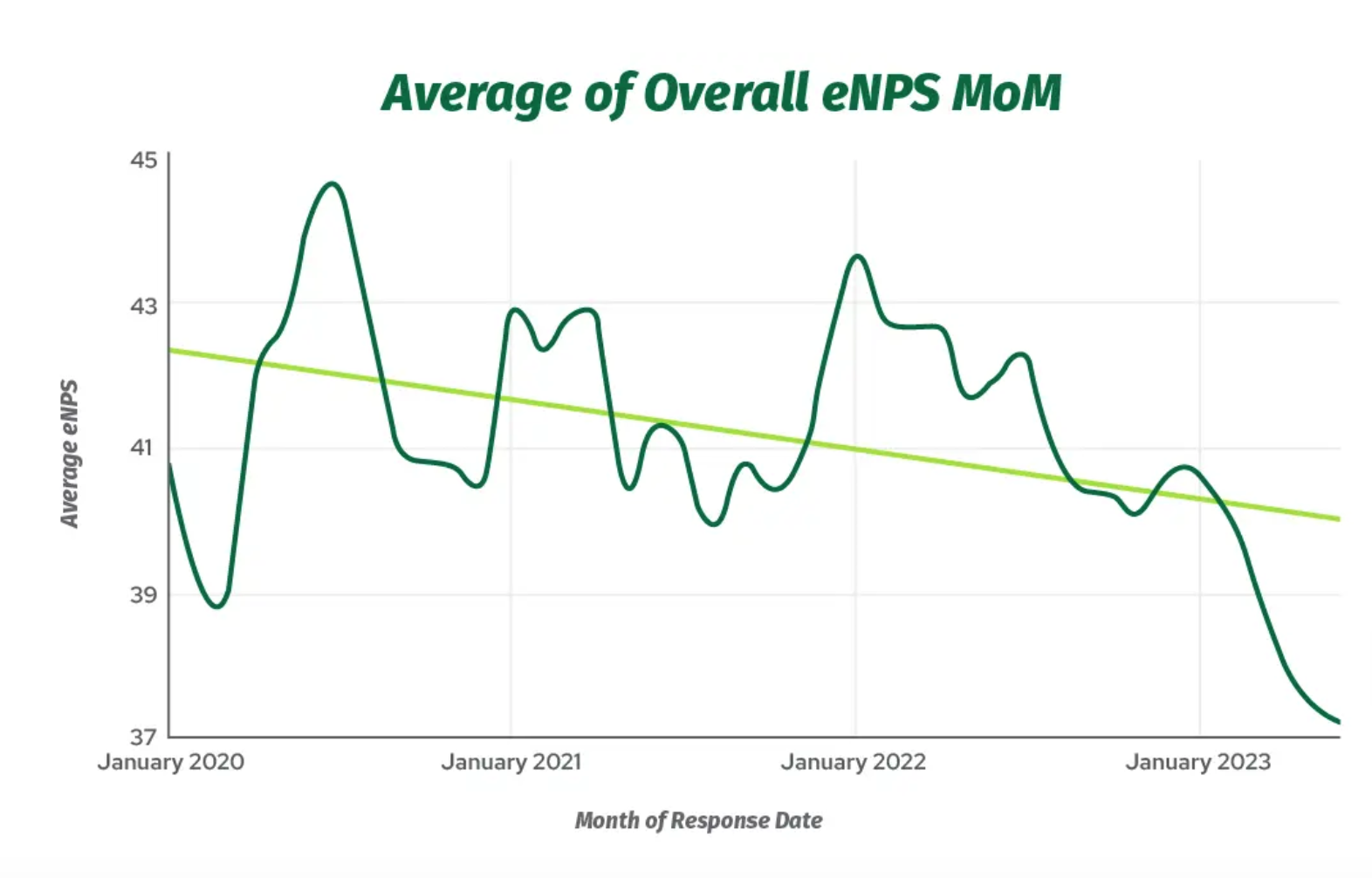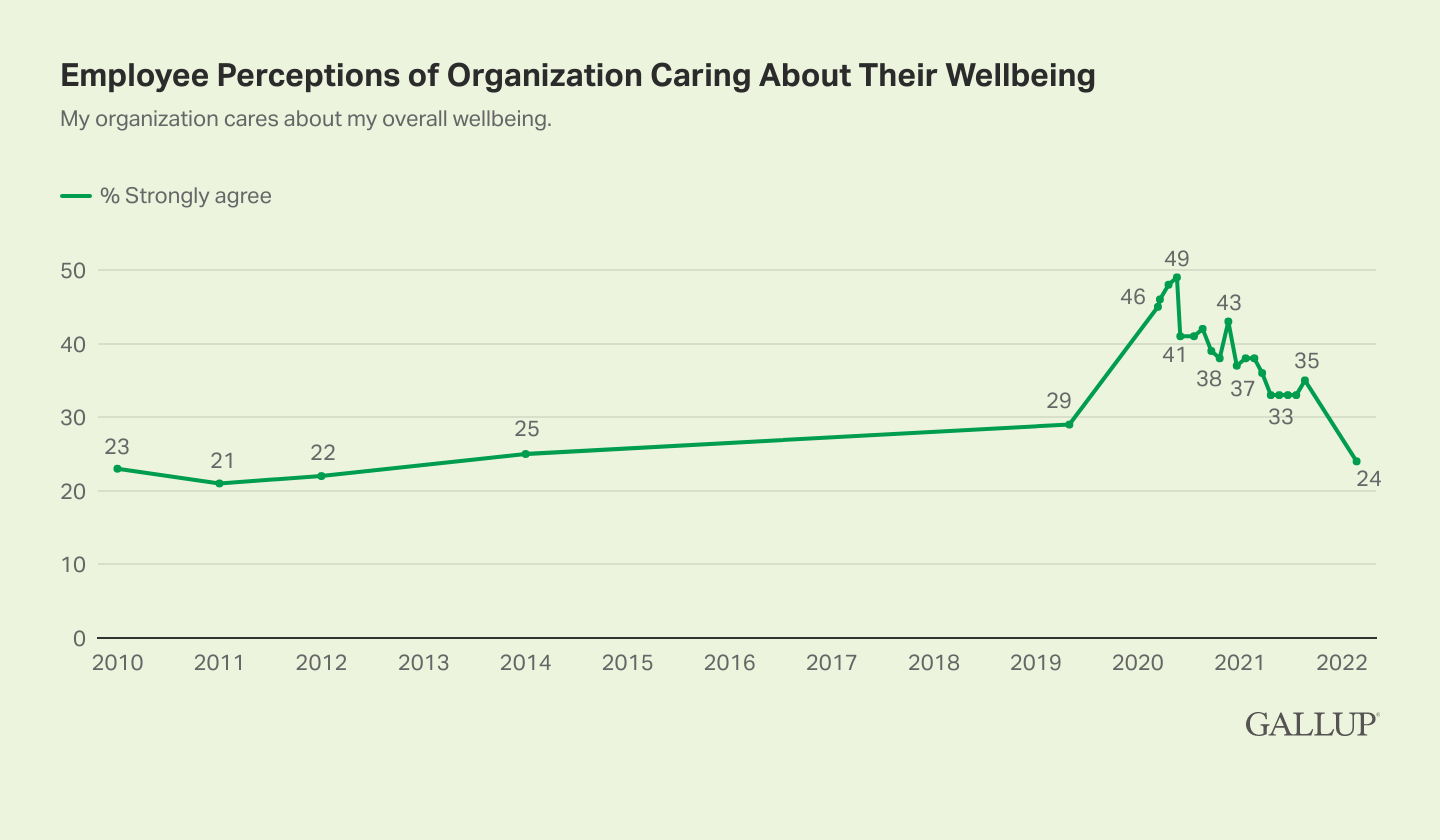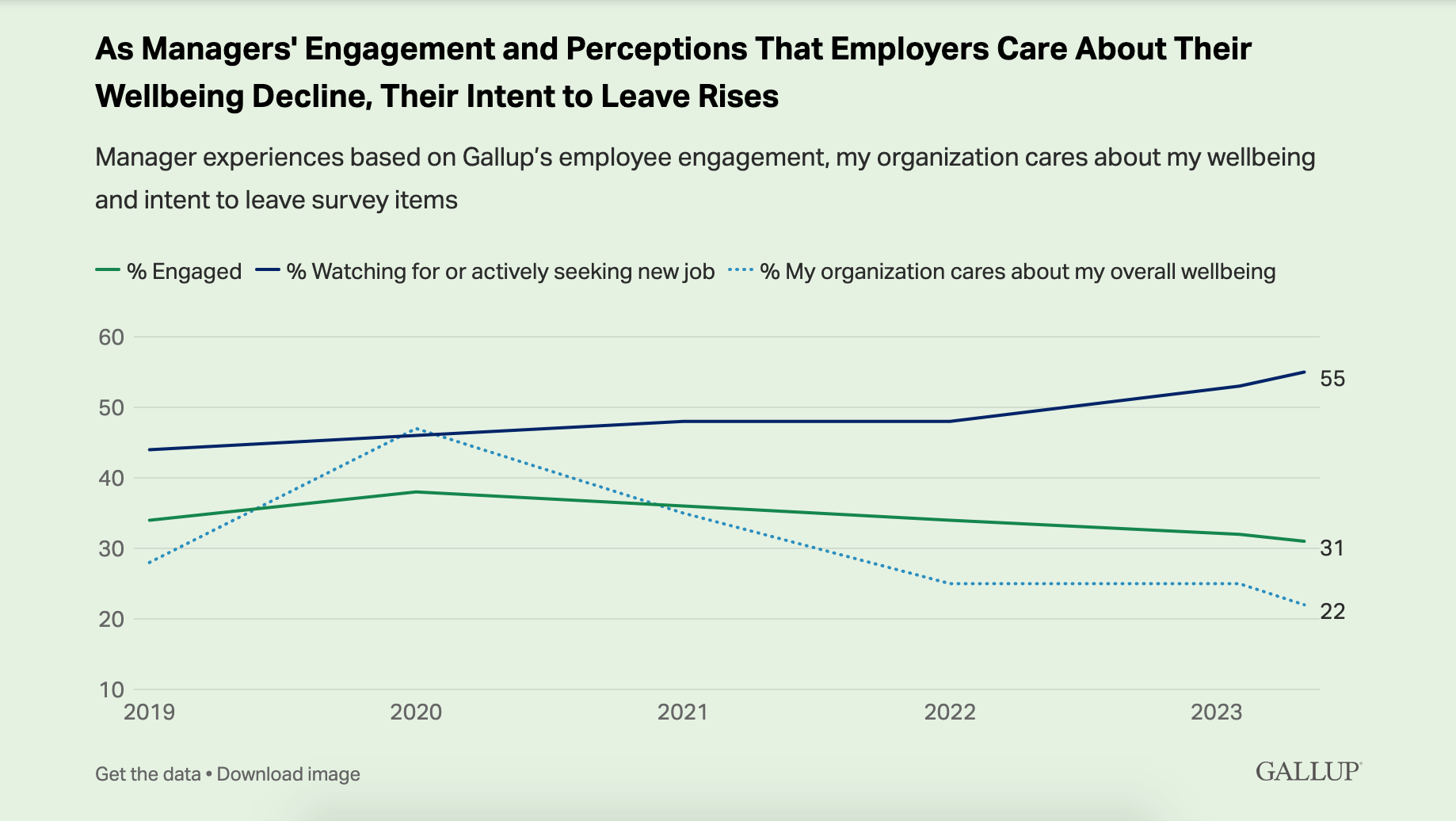Emotional Intelligence at Work
By Michael Miller

Why Are Managers So Unhappy?
October 2023
This is Emotional Intelligence at Work, a newsletter about workplace culture, employee wellbeing, and how to create sustainable, thriving businesses. This is the browser version. If you want to get the monthly newsletter free in your inbox, you can subscribe here.
1. The Great Gloom
There’s one dominant theme in the recently published State of the Heart report, the world’s largest study of emotional intelligence:
People are suffering – at home and at work.
Disengaged. Burnt out. Exhausted. Disconnected. Some demographic groups are doing better than others – like women vs. men and older generations vs. younger generations – but overall, people are struggling. We’re feeling the emotional aftershocks of the pandemic and years of pain and uncertainty.
The problems are acute at most workplaces right now:
- Employee happiness declined sharply in 2023 (BambooHR)
- Job satisfaction has dropped nearly 8% since 2019 (BambooHR)
- A majority of people worldwide have an unhealthy relationship with work (HP Work Relationships Index)
Research from software firm BambooHR found that employee happiness has taken an alarmingly steep downturn this year, according to a survey of 57,000 employees at 1,600 companies in the US and internationally. Employees are more unhappy now than they were during the height of the COVID-19 pandemic, and job satisfaction has dropped nearly 8% since 2019.
BambooHR calls it The Great Gloom.
Check out this graph of employee satisfaction from June 2020 to June 2023:
Since January, employee satisfaction is declining at a rate 10x faster than the previous three years.
In both the BambooHR report and the State of the Heart study, employee unhappiness and burnout are surging in particular industries, like Tech, Healthcare & Education, and actually declining in other sectors, like Finance and Building & Trades.
But for most employees, regardless of sector, work is not meeting expectations.
And it’s even worse for the people who manage people.
2. The Most Gloomy? Managers
Managers are not doing well. Currently, managers are more likely than their teams to be:
- disengaged at work
- burned out
- looking for a new job
- feeling like their organization does not care about their wellbeing
Source: Gallup
That is in a world where the majority of employees are disengaged and many are burnt out. Somehow, it’s even worse for managers. Why?
Gallup lists three primary reasons for managers’ plight: economic uncertainty, employees’ unmet needs, and hybrid work complexity. Let’s take a quick look at each:
Economic uncertainty
Recession fears and talks of imminent layoffs dominated the economic discussion for much of the past year. Some industries, like Tech, did experience widespread layoffs. Unsurprisingly, Tech is also the industry with the highest rates of burnout and the fastest growing rates of employee unhappiness.
Uncertainty takes a toll on managers. As the bridge between leadership and the rest of the organization, managers bear the brunt of the emotional impact with layoffs and restructurings.
Employees’ unmet needs
One key finding from the State of the Heart report: Companies are not meeting employee demands for workplace wellbeing – and employees often don’t think the organizations care. After peaking in the early days of the pandemic, employees’ perceptions that their organization cares about their wellbeing has been plummeting:
As you might expect, managers’ declining perception that the organization cares about their wellbeing is correlated with declining engagement and an increasing intent to look for another job:
When organizations fail to meet employees’ needs, managers feel the pain.
Hybrid work complexity
A final factor making managers’ lives miserable? Hybrid work.
A friend of mine works as a middle manager at a large Fintech firm, and I remember him telling me in 2022: “Managing a fully remote team is just way different than managing in person. It’s a totally different job, and I don’t like it nearly as much.”
Even in the best case scenario, hybrid work adds complexity and requires more effort in coordination, teamwork and culture. This is no small task. Derek Thompson of The Atlantic proposed creating an entirely new class of middle managers – synchronizers – just to assist with hybrid work complexity. Instead, organizations just added it to a managers’ list of responsibilities, often while cutting resources and expecting managers to enforce unpopular return-to-office mandates. Meanwhile, only 3 in 10 managers have received formal training on managing a hybrid team.
All these changes – and a lack of support – have left managers feeling more isolated, stressed and disconnected than in the past.
And it may be about to get worse.
3. Manager, Meet RTO Mandate
Most employees like hybrid and remote work and, on the whole, want even more of it. Data from the Global Survey of Working Arrangements in June 2023 found that employees wanted double the number of remote work days that employees are currently offering – a gap present in all 34 countries in the survey. This isn’t a mild preference, either: In other research, employees equate a mix of working in the office and working from home to an 8 percent raise.
At the same time, it appears many leaders feel threatened by remote work and want to go in the opposite direction. This year has seen a raft of return-to-office (RTO) mandates at many of the largest companies – and a recent KPMG survey of more than 400 U.S. CEOs (of companies with at least $500 million in revenue) found that 62% envision their staff working permanently at the office within three years, up from 34% a year ago.
That is bad news for managers.
“Managers are often caught between employees’ and leaders’ expectations,” Gallup says, “During times of change, that’s a recipe for burnout.”
The good news is that a widespread failure to meet employee and manager expectations presents an opportunity for some companies to gain a real competitive advantage. Employers who do meet employee expectations for flexible work and emotionally intelligent leadership will have a distinct advantage as they seek to attract and retain top talent.
The HP Work Relationships Index found that emotional intelligence – and increased trust and agency – hold considerable weight with employees: 83% say they’re willing to earn less money to find an employer that values these factors.
- Strong workplace culture: Knowledge workers would take an 11% pay cut to work somewhere with empathetic, emotionally intelligent leadership, and above-average employee engagement and fulfillment.
- Flexibility: The same group would give up 13% of their salary to work somewhere that lets them work where or when they want.
Employee expectations have changed – and most companies haven’t caught up.
That gap is an opportunity.
Thank you for reading the browser version of Emotional Intelligence at Work, a newsletter about workplace culture, employee wellbeing, and how to create sustainable, thriving businesses. If you want to get the monthly newsletter free in your inbox, you can subscribe here.
- Emotional Intelligence at Work: Why Are Managers So Unhappy? - October 18, 2023
- New Research: The Emotional Pandemic Is Still Raging - October 3, 2023
- Tech Is In Trouble: Will Return to Office Mandates Make it Even Worse? - September 20, 2023




